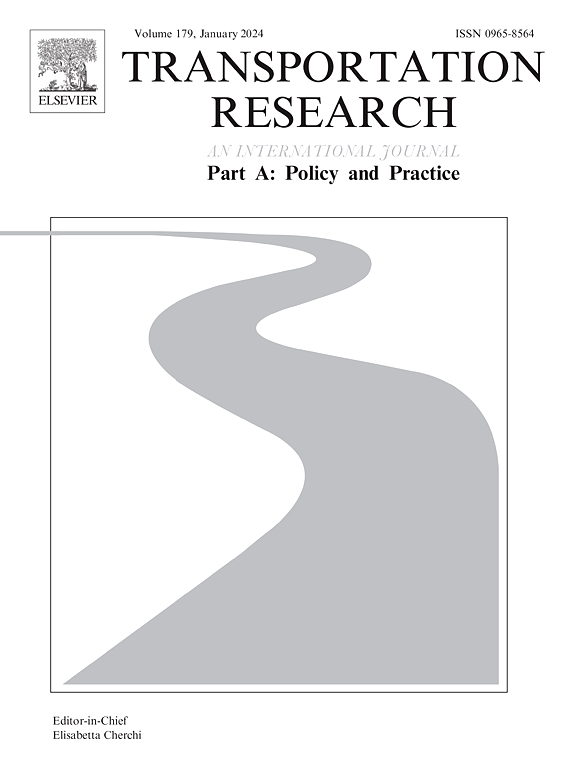The potential of governmental regulation on shared mobility-on-demand systems
IF 6.3
1区 工程技术
Q1 ECONOMICS
Transportation Research Part A-Policy and Practice
Pub Date : 2025-02-01
DOI:10.1016/j.tra.2024.104360
引用次数: 0
Abstract
Shared Mobility-on-Demand services have the potential to contribute to a more socially and environmentally sustainable mobility provision. However, this potential may not be fully exploited due to possible conflicts with the objectives of the service providers. Thus, political discourses address regulatory instruments to influence providers’ operational planning. This paper analyzes the effects of two currently debated instruments, i.e., the introduction of a minimum pooling rate and a minimum spatial acceptance rate. Our analysis is based on mathematical optimization models that we formulate as generalizations of the selective dial-a-ride problem. More precisely, the problem is first captured by a single-period model formulation and then generalized to a multi-period horizon to implement different regulatory strategies. In a comprehensive computational study, we solve the regulated model formulations to optimality both for artificial and real-world data provided by our industry partner FLEXIBUS. We evaluate different levels of regulation for both instruments regarding their feasibility and their impact on the Shared Mobility-on-Demand system, and thereby discuss key factors, specific issues, and recommendations with regards to the practical application of regulatory instruments for public authorities that can be derived from the results of our study. Overall, our analysis recommends a multi-period application for both regulatory instruments. In this context, a moderate minimum pooling rate can enhance environmental sustainability, though it may create trade-offs with social or service provider objectives. In contrast, a minimum spatial acceptance rate shows minimal conflicts with other objectives, but requires an effective spatial partitioning approach and is sensitive to the provider’s supply–demand ratio.
求助全文
约1分钟内获得全文
求助全文
来源期刊
CiteScore
13.20
自引率
7.80%
发文量
257
审稿时长
9.8 months
期刊介绍:
Transportation Research: Part A contains papers of general interest in all passenger and freight transportation modes: policy analysis, formulation and evaluation; planning; interaction with the political, socioeconomic and physical environment; design, management and evaluation of transportation systems. Topics are approached from any discipline or perspective: economics, engineering, sociology, psychology, etc. Case studies, survey and expository papers are included, as are articles which contribute to unification of the field, or to an understanding of the comparative aspects of different systems. Papers which assess the scope for technological innovation within a social or political framework are also published. The journal is international, and places equal emphasis on the problems of industrialized and non-industrialized regions.
Part A''s aims and scope are complementary to Transportation Research Part B: Methodological, Part C: Emerging Technologies and Part D: Transport and Environment. Part E: Logistics and Transportation Review. Part F: Traffic Psychology and Behaviour. The complete set forms the most cohesive and comprehensive reference of current research in transportation science.

 求助内容:
求助内容: 应助结果提醒方式:
应助结果提醒方式:


